Reply To:
Name - Reply Comment
Last Updated : 2024-04-25 00:00:00
In anti-personnel (AP) landmine-contaminated countries every day some 10 people lose their life or limbs and that means every year around 4,000 people get maimed or killed. Those injured and killed include civilians and animals during and after the conflict. This victim-activated AP landmine is considered to be an outdated and outlawed weapon in the modern world and has never helped win any war since it came into use.
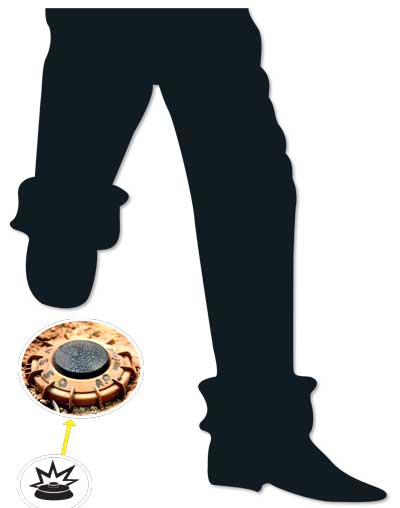 Around 60 countries around the world are contaminated by AP landmines. The International Mine Action Community has set a target to make the world free of AP landmines by the year 2025 and much work needs to be done in this regard.
Around 60 countries around the world are contaminated by AP landmines. The International Mine Action Community has set a target to make the world free of AP landmines by the year 2025 and much work needs to be done in this regard.
The Mine Ban Treaty (MBT) widely known as the Ottawa Convention adopted in 1997 and entered into force in March 1999.
The MBT commits to: never use anti-personnel mines, nor to develop, produce, otherwise acquire, stockpile, retain or transfer them and destroy mines in their stockpiles within four years, clear all mine infested areas in their territory within 10 years, in mine-affected countries, conduct mine risk education and ensure the exclusion of civilians from mined areas, provide assistance in the care and rehabilitation, and social and economic reintegration, of mine victims, offer assistance to other States 
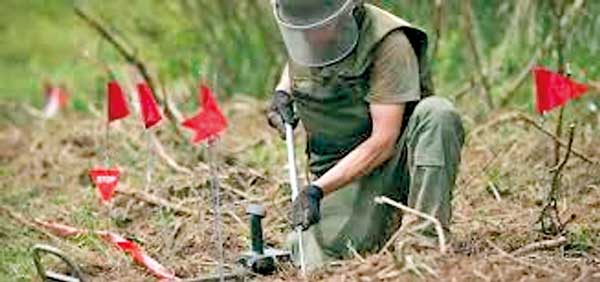
Up to date 162 State Parties to the MBT and this includes the entire European Union (EU), developed Commonwealth member states and other developed nations around the world. The world should be 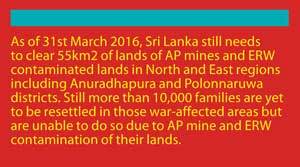 thankful that these nations support banning this weapon and their support for a mine-free world by various means. Those 162 nations’ militarise should not use, produce or stockpile such weapons since they became state parties to the MBT and particularly during recent wars. They had no security related issues protecting their land borders or military installations due to non use of AP mines.
thankful that these nations support banning this weapon and their support for a mine-free world by various means. Those 162 nations’ militarise should not use, produce or stockpile such weapons since they became state parties to the MBT and particularly during recent wars. They had no security related issues protecting their land borders or military installations due to non use of AP mines.
Non-State Parties to the MBT Only 35 states remain outside the MBT. The biggest stockpiles of AP landmines are held by China, Russia, the United States, India and Pakistan and a small group of countries that still continues producing AP landmines, including India, Myanmar, Pakistan and South Korea.
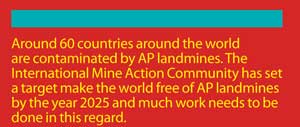 The majority of the countries remains outside the treaty and keep stockpiles that collectively total around 50 million landmines. They also should not be able to profit by selling those stockpiles as 2/3 of the world countries (162) are state parties to the MBT. The US, China, Russia, India and Pakistan should become state party to the MBT without any delay. They argue that their borders are protected by AP mines (the US confirmed that they use AP mines in Korean borders only). This will not undermine their ambition to become a world military power or regional power when they ban inhuman and indiscriminate weapons such as AP mines.
The majority of the countries remains outside the treaty and keep stockpiles that collectively total around 50 million landmines. They also should not be able to profit by selling those stockpiles as 2/3 of the world countries (162) are state parties to the MBT. The US, China, Russia, India and Pakistan should become state party to the MBT without any delay. They argue that their borders are protected by AP mines (the US confirmed that they use AP mines in Korean borders only). This will not undermine their ambition to become a world military power or regional power when they ban inhuman and indiscriminate weapons such as AP mines.
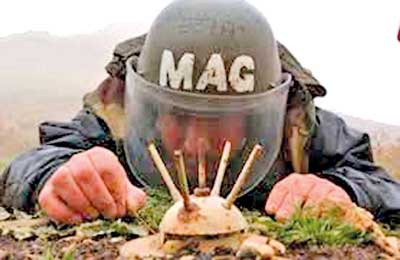 During war time countries like Afghanistan which acceded to both the MBT and the Convention on Cluster Munitions (CCM) and became exemplary to the world. Adhering to important humanitarian disarmament conventions they also have border armed conflicts but refused to use such weapons. Sri Lanka after its own internal conflict has no land boundaries (as an island) to protect it from the use of AP mines. Sri Lanka as AP mine-contaminated Country During the three decade long armed conflict between government security forces and the Liberation Tigers of Tamil Eelam (LTTE) Sri Lanka’s land got contaminated with the AP mines.
During war time countries like Afghanistan which acceded to both the MBT and the Convention on Cluster Munitions (CCM) and became exemplary to the world. Adhering to important humanitarian disarmament conventions they also have border armed conflicts but refused to use such weapons. Sri Lanka after its own internal conflict has no land boundaries (as an island) to protect it from the use of AP mines. Sri Lanka as AP mine-contaminated Country During the three decade long armed conflict between government security forces and the Liberation Tigers of Tamil Eelam (LTTE) Sri Lanka’s land got contaminated with the AP mines.
The Government security forces used AP mines as a defensive weapon and LTTE used them as an offensive weapon. The Government of Sri Lanka never produced them but used imported mines. The LTTE produced AP mines and improvised explosive devices (IEDs) in their own factories and used them extensively during the war.It believed that the LTTE introduced AP mines to the war in Sri Lanka. Since LTTE started to use AP mines the Government security forces were not ready to use them. In the same manner the LTTE introduced suicide bombers to Sri Lanka and to the world. But the Sri Lankan military never used them. One reason was that as soon as the war ended, the Government should have banned the AP landmines since they were introduced to Sri Lanka by the LTTE. In 2014, UNICEF reported that since the 1980s some 22,177 AP mine/ERW (Explosive Remnants of War) casualties had been recorded, including 1,603 civilian casualties. However, from 2006 to 2009 accurate casualty information was difficult to access due to the ongoing conflict, likely resulting in under-reporting.
Post-war Sri Lanka is no exception and still civilian casualties are reported from AP mine contaminated areas of the country. Due to the AP mine-contamination civilians are hindered from going back to their land of origin to resettle and use lands for agricultural and other socioeconomic activities.
As of 31st March 2016, Sri Lanka still needs to clear 55km2 of lands of AP mines and ERW contaminated lands in North and East regions including Anuradhapura and Polonnaruwa districts. Still more than 10,000 families are yet to be resettled in those war-affected areas but are unable to do so due to AP mine and ERW contamination of their lands.
When analysing the previous and current mine clearance statistics, it is evident that it will take many years to complete this task unless Sri Lanka becomes state party to the MBT.

Add comment
Comments will be edited (grammar, spelling and slang) and authorized at the discretion of Daily Mirror online. The website also has the right not to publish selected comments.
Reply To:
Name - Reply Comment
US authorities are currently reviewing the manifest of every cargo aboard MV
On March 26, a couple arriving from Thailand was arrested with 88 live animal
According to villagers from Naula-Moragolla out of 105 families 80 can afford
Is the situation in Sri Lanka so grim that locals harbour hope that they coul